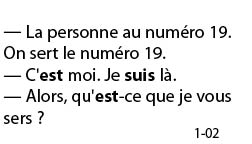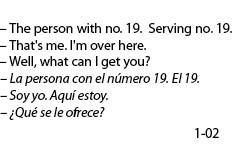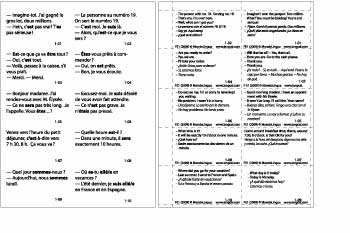Most serious language learners have a notebook of some sort where they jot down phrases or words that they want to remember or learn by heart. The only problem is that you have to carry around the entire phrasebook and then flip through a bunch of pages. And heaven help you if you lose that notebook.
This is why I’m a great fan of flashcards (or flash cards) for language learning. Flashcards are little pieces of paper or cards where the front side usually has something like a question or a word and the rear side the answer or translation. Today many people use electronic versions on their computer or smartphone.
Not everybody likes flashcards. Those people who do like flashcards find them useful as memory aids. In the field of language learning, they are popular for the following reasons:
- Highly portable; take only what you need with you in a pocket or purse.
- Very useful during moments of dead time such as waiting in line or during a commute.
- Can be arranged in all kinds of groups or subsets such as by subject, order of difficulty, priority, etc.
One-word flashcards are useless
In their simplest form, language flashcards have one word on the front and the translation of the back. For example, “le chien” on the front and “the dog” on the back. There are many sets of this sort of flashcard available for free or for purchase on the Internet. The more fancy cards will even have illustrations on the front.
In my opinion, these one-word flashcard sets are for beginners only and are of no interest to readers here. The reason is simply that in reality words are always used in a specific context. Once we get beyond the most elementary level of learning a language, we must work with entire phrases or sentences. Rule of thumb: always put an entire phrase on the front of the flashcard.
How I use flashcards to memorize phrases
I find flashcards great for memorizing entire phrases or dialogues that highlight a specific point of grammar or vocabulary. When I see or hear something that I like in any of my target languages, I write it down on a card with a translation on the back. After a while, of course, I end up with a large stack of cards. My Spanish stack contains about 800 cards.
I’ll admit that this large stack is a bit messy and has a nasty habit of falling all over the floor. This is where the electronic systems are really handy.
My stack is divided into various subsets. I may have a set of around 50 cards that I’m currently working on. Sometimes I’ll have a set of cards on a specific theme or topic. With a subset of cards in hand, I simply run through them to memorize target words or phrases. If no one is around, I’ll even read the contents aloud.
If you want to get really fancy, you can do something called Spaced Repetition. The idea is to study subsets of cards at certain preset intervals like once a day then once week and then once a month.
Flashcards are also very discreet. I can be in a meeting and have in front of me a few cards with some idioms or expressions that I intend to use that particular day.
Electronic flashcard systems
Electronic flashcard systems on smartphone and computers are an excellent alternative to the traditional paper products. The most well-known of the electronic systems is from Anki. Other companies such as Quizlet and Memrise make flashcard-like systems. There are also companies that provide electronic and paper flashcards for French.
I’m not familiar enough with the various products on the market to comment properly. All that I can say is that a number of the commercial systems are along the lines of one word per card, something that I consider basically useless.
In all this. I still prefer the paper flashcards because they are easy to consult and I can write on them.
My Essential French 1 flashcards
For those people who like paper flashcards, I produce a set of 420 flashcards derived from my Essential French 1 wall chart calendar product. True to my language learning philosophy, the contents of the cards are never single words but entire phrases, In fact, many of the cards contain entire dialogues that I like to call units of communication.
Here are is an example from the verb être theme page. As you can see, although the focus is forms of the verb être, we are simultaneously working on many different aspects of French grammar and vocabulary. In essence, we are killing a few birds with one stone.
This flashcard product is sold as a downloadable pdf that you must print out double-sided on the paper or card stock of your choice and then trim long the crop lines. This is what the pages look like before they are cut up:
The finished product is the size of North American business cards. This is a very convenient size for wallets. Also one can find many kinds of containers, boxes and holders for cards this size.



